Porsche 917: Endurance racing's monster
The opening years of the 1970s belonged to the Porsche 917 – the dominant endurance racer in a variety of iconic liveries. Damien Smith tells its fortune-filled history
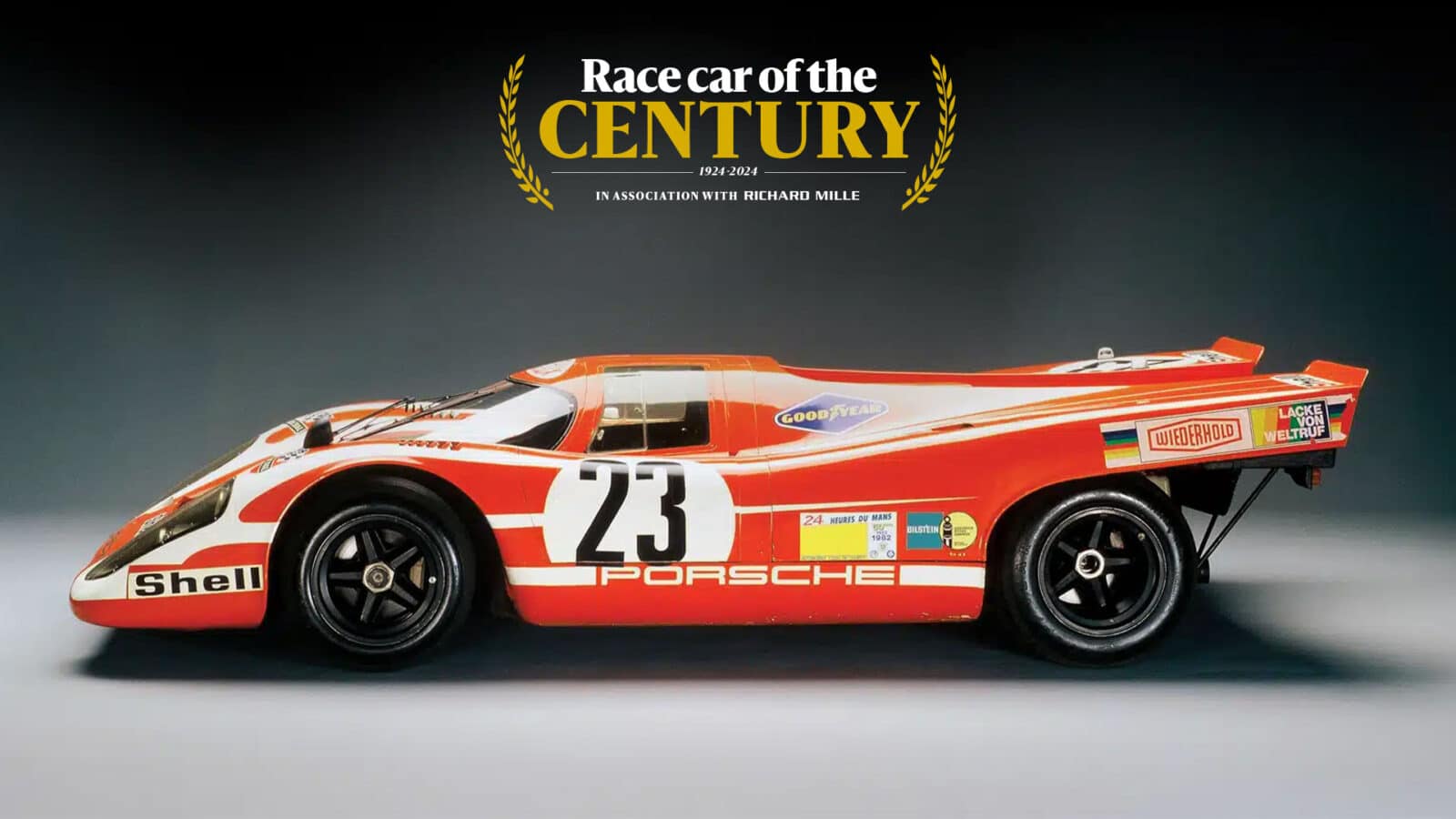
Porsche AG
Voting has now closed in our Race Car of the Century poll and the winner will be announced later this summer. Sign up to our Archive newsletter and you’ll be among the first to be notified.
6 1970s Porsche 917
A racing car so great they outlawed it twice. That’s one way to summarise the revered Porsche 917 that ruled the World Championship of Makes for two glorious years at the dawn of the 1970s, then crossed the Atlantic, transformed into a turbocharged monster and blitzed Can-Am for two more. The variations, the lairy liveries, the cult drivers, the mind-boggling numbers, the hair-raising war stories… the 917 has been feted for ever after as the most dazzling expression of Sturm und Drang bombast, matched only by the Silver Arrows grand prix beasts of the 1930s.
It was a monster from birth, of course, initially in a way its daring eyes-on-stalks drivers could never profess to love. It was the rule-makers who eventually outlawed it that left the door ajar to its creation. A reduced homologation requirement for ‘road-going’ sports cars (ha!) from 50 units to 25 gave Porsche the impetus.
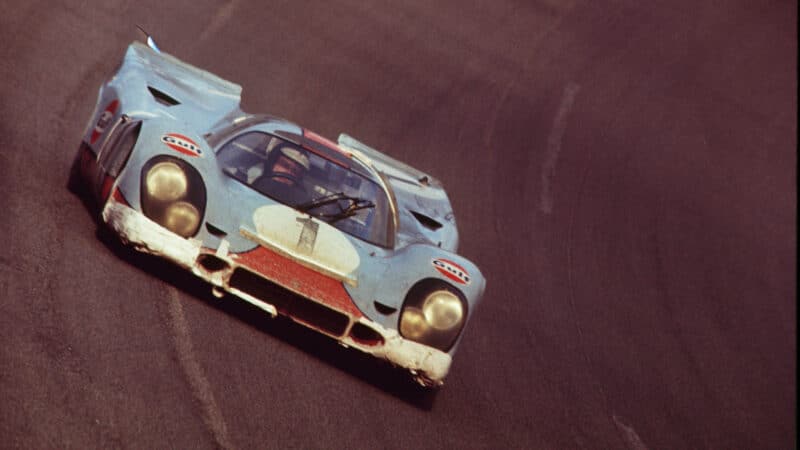
The 917K debuted at the 1970 Daytona 24 Hours – and won
Getty Images
The heart of the matter was an air-cooled engine conceived out of research for German army tanks, hence the chunk of Volkswagen funding. The result was Hans Mezger’s 4.5-litre 180-degree 12-cylinder with an estimated 560bhp at 8300rpm, weighing in at 240kg. The gear-driven horizontal cooling fan cost 17bhp – which was a fair trade for the lack of water-cooled plumbing.
The Typ 912/00 went into battle harnessed to an aluminium spaceframe of varying tube diameter. No monocoque this late in the day? Not out of Zuffenhausen, not in this decade. The forward positioning of the cockpit to accommodate the 12-cylinder lump left the drivers’ feet well ahead of the front axle line, but such trifles were irrelevant when there were eye-popping top speeds to chase on Le Mans’ Hunaudières straight. Flimsy 1.2mm-thin glassfibre reinforced resin bodywork covered the chassis and the relatively short wheelbase, with two aluminium tanks, one on either side of the bucket seat, amounting to a 140-litre fuel capacity. This was going to be a handful.
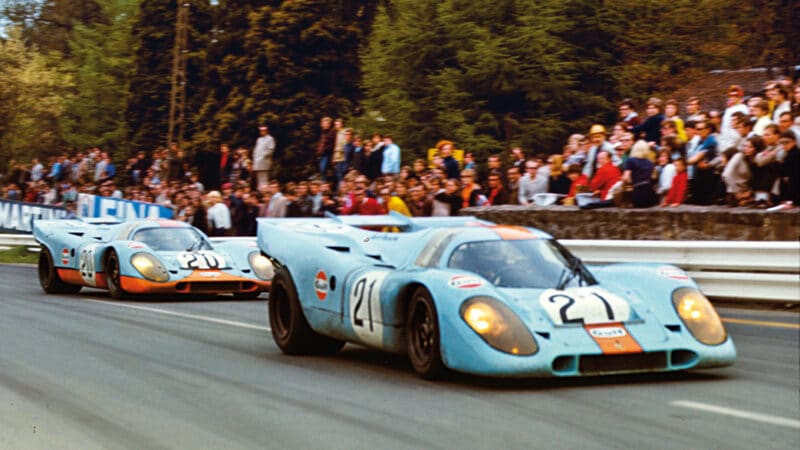
A commanding 1-2 in the ’71 Spa 1000Kms
DPPI
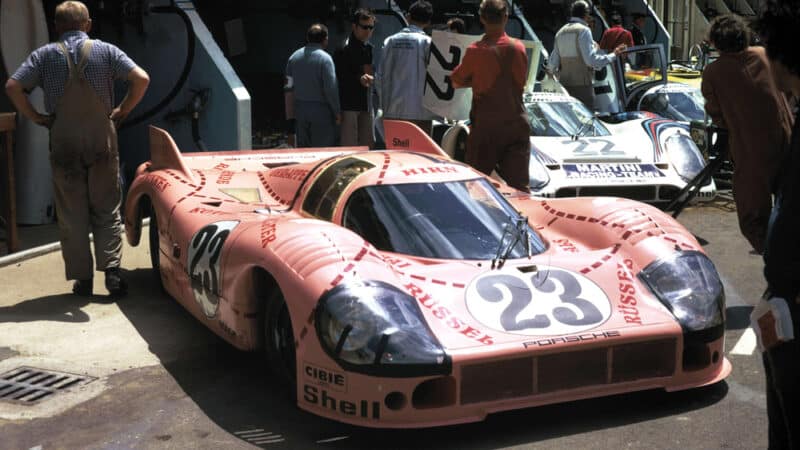
‘Pink Pig’, Le Mans, 1971
Porsche AG
Did the penny drop for the governing CSI on the monster it had created when the 917 was revealed at the Geneva Motor Show on March 12, 1969? Perhaps it was when its inspectors arrived at Zuffenhausen to grant homologation. Only three of the 25 were actually fully complete the first time, but when they returned in April there they all were once more, this time with keys primed in ignitions.
Speed was never a problem. At the Le Mans test day Rolf Stommelen managed a lap of 3min 30.7sec, four and a half seconds faster than the record from the previous year. It was keeping the thing straight on the straight that was the trouble. Then there was the porpoising. And the lift, partly created by that horizontal cooling fan. As for the corners, forget it. That first year, the 917 spooked even hard-as-nails Frank Gardner and Jo Siffert. At the 24 Hours itself, after Jacky Ickx had walked to his GT40 in protest at the dangers of the traditional running start, John Woolfe perished on the first lap. His belts were undone when he lost control at Maison Blanche. Still, Vic Elford and Richard Attwood were leading by miles when the clutch broke on Sunday morning.
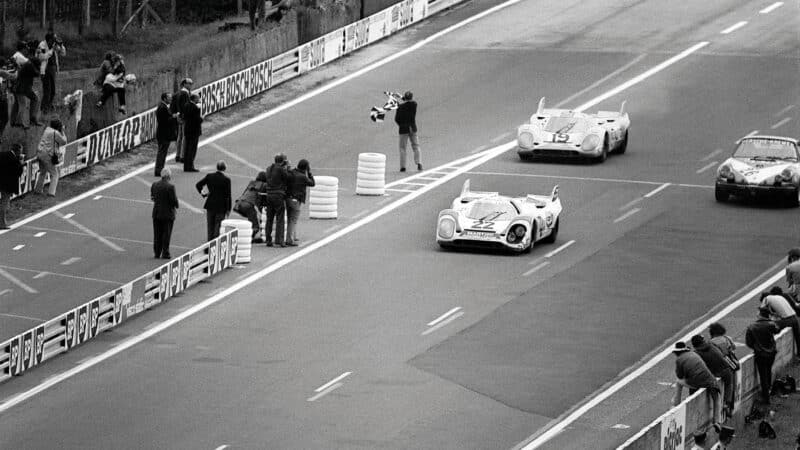
These 917Ks outclassed the field at Le Mans in 1971 – a 1-2, with the Martini Porsche of Gijs van Lennep and Helmut Marko leading
Getty Images
Porsche handing the works team reins to JW Automotive Engineering, fresh from its back-to-back GT40 Le Mans double, was key to the taming of the 917 by 1970. In the powder blue and orange of Gulf Oil, John Wyer’s cars won everywhere over the following two seasons – except Le Mans, despite what Steve McQueen would have you believe. Just as well, then, that energetic Ferdinand Piëch, grandson of Ferry Porsche, couldn’t leave JWAE alone to its own devices. The founding of Porsche Konstruktionen KG Salzburg – in the name of his mother Louise! – gave Porsche a second string to its bow. One that grated with ‘Death Ray’ Wyer.
But when the bigger-engined Gulf cars faltered at Le Mans in 1970, there was the white-striped 4.5-litre Salzburg car of last-race veteran Hans Herrmann and the understated Attwood to break the Porsche duck and score the first win of 19 (and counting). The year after, Hans-Dieter Dechent’s bianco Martini hit the spot as Helmut Marko and Gijs van Lennep doubled the score in a 917 with a magnesium chassis, setting an outright distance record of 3315.2 miles at 138.133mph that would stand until 2010.
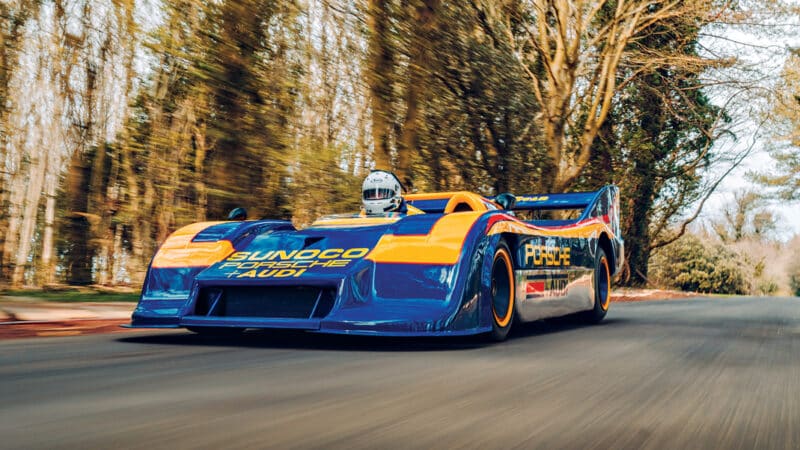
In 2019, Andrew Frankel proved you could spin the wheels of a 917 at 120mph – in this 917/30 once raced by Mark Donohue in Can-Am
Mark Riccioni
Then there were the tall tales of short and long tails: K for Kurz, L for Lang, and the one that really stretched the legend – LH for Langheck. Piëch commissioned the French Société et de Réalisations Automobiles (SERA) to push the possibilities on airflow. Its results captured the zeitgeist in the green and blue psychedelic ‘hippy car’. And in ’71 there was irreverence in the apparently ‘butchered’ 917/20 – aka the Pink Pig. Although Martini’s Count Rossi didn’t see the joke.
A coterie of characters lined up to drop into them: Elford, Redman, Larrousse, Kauhsen, Kinnunen, Bell, Oliver, Hailwood, Hobbs and more. But no one fitted the 917 quite like Siffert and Pedro Rodriguez. Door to door at Spa’s Eau Rouge… ‘Seppi’ buzzing his engine at 2am in front of the pits at Le Mans… Rodriguez’s channelled fury in the Brands gloom… and more comeback heroics at the Österreichring ’71. A week later the Mexican was dead, killed in a Ferrari at the Norisring. Three months later so was Seppi, killed in a BRM at Brands. Neither died in a 917, but by now ‘their’ car was already facing exile, curbed (and kerbed) by a startled CSI once again changing the game.
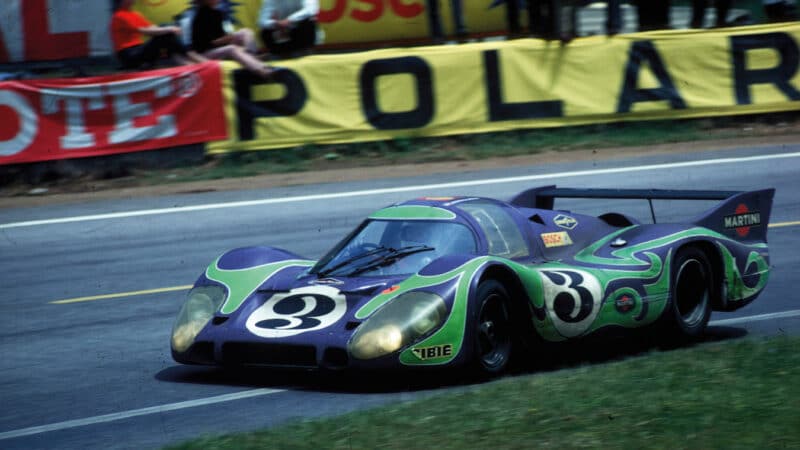
Psychedelia-smiths, Le Mans, 1970
DPPI
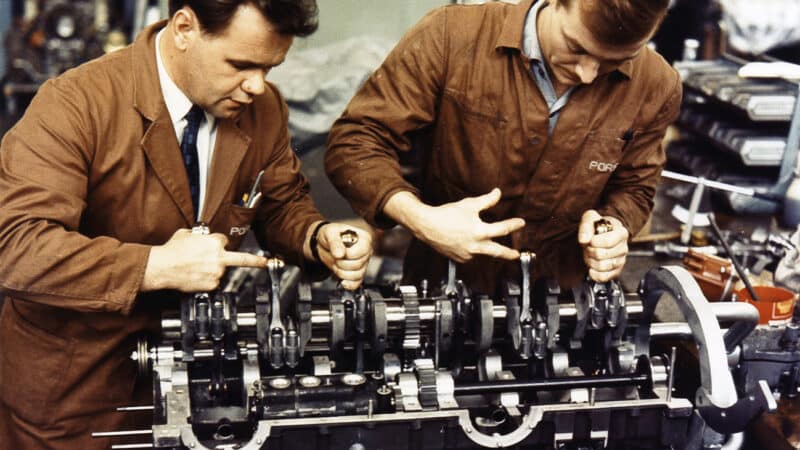
Working on the Typ 912 flat-12 engine
Porsche AG
Wyer’s blame game post-Le Mans perhaps cost him the deal to run 917s in Can-Am from ’72, despite 11 wins from 17 world championship races. Instead, Penske picked up the baton as Porsche tasted a forced induction future with the (over)blown 917/10 and ultimate hooligan 917/30 – six wins from eight races in ’73 – before Can-Am’s ruling body cried enough.
“In 1975 Mark Donohue set the closed-course record lap at Talladega. It stood for 11 years.”
Even then, there was still life. Another Interserie title, then in 1975 Mark Donohue’s closed-course record lap at Talladega: 221.120mph. It stood for 11 years. Then in 1981, an Indian summer: the Kremers spotted a chink as capacity rules were relaxed, dusted off a 917 and took it back to Le Mans. But better was saved for last. That September at Brands Bob Wollek haunted the new Group C Ford C100 and even led – before the steering broke. Perfect timing. Porsche’s next-generation masterpiece was waiting in the wings.
MS verdict: The 956/962 went harder for longer, but nothing stirs the blood like a full-fat 917.
Sponsored by Classic Team Lotus

